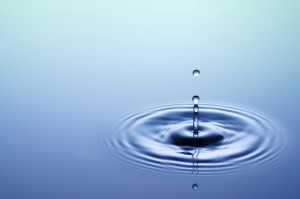November 2023 Newsletter
August 2023, Newsletter
July 2023 Newsletter
May 2023 Newsletter
August 2022 Newsletter
July 2022 Newsletter
June 2022 Newsletter
May 2022 Newsletter
April 2022 Newsletter
March 2022 Newsletter
2021 Pilot Study Interim Report
Treatment Committee
Water Conservation
The FCID first introduced watering restrictions in 2009 because, during heavy irrigation in summer, the distribution system is unable to keep up with demand. When too many homeowners use large amounts of water all at the same time, some homeowners experience a drastic drop in pressure or even no water at all. All households have been assigned a #1 or a #2 which can be found on your annual tax notice. #1 households may sprinkle on odd days (1st, 3rd, 5th, etc.) of the month. #2 households may sprinkle on even days (2nd, 4th, 6th, etc.) of the month. Sprinkling is restricted to before 9:00 am and after 6:00 pm. Exceptions are made for newly seeded lawns. Hand watering may be done at any time on any day.
CBT’s WaterSmart website has excellent information on water use and conservation in the Kootenays. Watering regulations for Kaslo and other Kootenay communities can be found there for comparison.
RDCK Water Conservation Strategies
What can I do to Conserve Water?
During the growing season water use can increase by as much as 50%. While lawns require a lot of water, much of this water is wasted due to over-watering and evaporation. Avoid watering in the hot sun. You’ll lose almost 50% of the water to evaporation.
Watering equipment also plays a part in how much water is saved and lost. Ideally, sprinklers should be suited to the size and shape of the lawn. That way, you avoid watering driveways and sidewalks. Installing timers on outdoor taps can be a wise investment.
Sprinklers that lay water down in a flat pattern are better than oscillating sprinklers which lose as much as 50% of what they disperse through evaporation. Drip irrigation systems which apply water only to the roots zone are the most efficient alternative.
By adopting some indoor and outdoor water-savvy habits around your home, you can ensure that there is adequate water supply for everyone!
Conserve Water Outdoors:
Practice xeriscapic landscaping techniques. Xeriscaping is the practice of planting with native or drought-tolerant plants. Some examples include: osier dogwood (Cornus stolonifera), dull Oregon grape (Mahonia nervosa), oceanspray (Holodiscus discolor), or Mock orange (Philadelphus lewisii). Consult with your local garden centre for details on which types and varieties of plants fit this category.
Wash your car infrequently, or better, don’t wash your car at all.
Purchase a rain barrel to collect rainwater which can then be applied to your lawn & garden.
Get rid of your lawn. Instead, plant native ground cover such as periwinkle (vinca), kinnick-kinnick, or cotoneaster. Not only do these plants require less water, they don’t need mowing, and stay green all summer.
Plant more trees and shrubs on your property to keep your house cool and to protect your garden from drying out. Compost the leaves that fall in the autumn.
Apply compost to your gardens. This helps soils to retain moisture and reduces the need to water as often.
If you have a lawn, water it infrequently. This promotes deep roots and heartier lawns. Grasses are typically very tough. One inch of water per week will keep your lawn happy.
If you use a sprinkler, avoid using the “mist” setting. Misting just encourages water to evaporate into the air before it hits the plants. Water only in the morning and early evening. This, too, reduces evaporation.
Conserve Water Indoors:
Renovating your bathroom? Invest in a low-flow or a dual flush toilet and save up to 30% of your daily water usage.
Install low-flow showerheads. They deliver 10 litres of water per minute. Conventional showerheads deliver 20-28 litres per minute.
Take shorter showers (maximum 5 minutes) or, when taking a bath, use less water in the tub.
Turn off the tap while brushing your teeth or when soaping your hands during washing.
Run your dishwasher only when it has a full load of dirty dishes. Some dishwashers even have a water saving cycle. Make use of it. When you don’t have a full load of dishes, use your sink.
If you like drinking cold water, try storing water in a container in the refrigerator. This way you don’t have to run the tap to make the water cold. Running the tap wastes 20-28 litres of water per minute.
Buying a new clothes washer? Invest in a front loading machine, they are exponentially more efficient (save energy, detergent and water!) Plus they are easier on your clothes and you may qualify for a rebate from your energy provider.
When washing your clothes, use the correct setting (e.g. small, medium, large) to match the amount of clothing you have. Use the shortest possible cycle.
Toilets can account for up to 30% of all inside water use. Place a brick wrapped in plastic in your toilet tank to reduce the amount of water used per flush. Remember to wrap the brick in plastic to prevent grit from entering your plumbing. A plastic pop bottle filled with water or sand and capped will also do the trick.
(courtesy Regional District Central Kootenay rdck.bc.ca)

